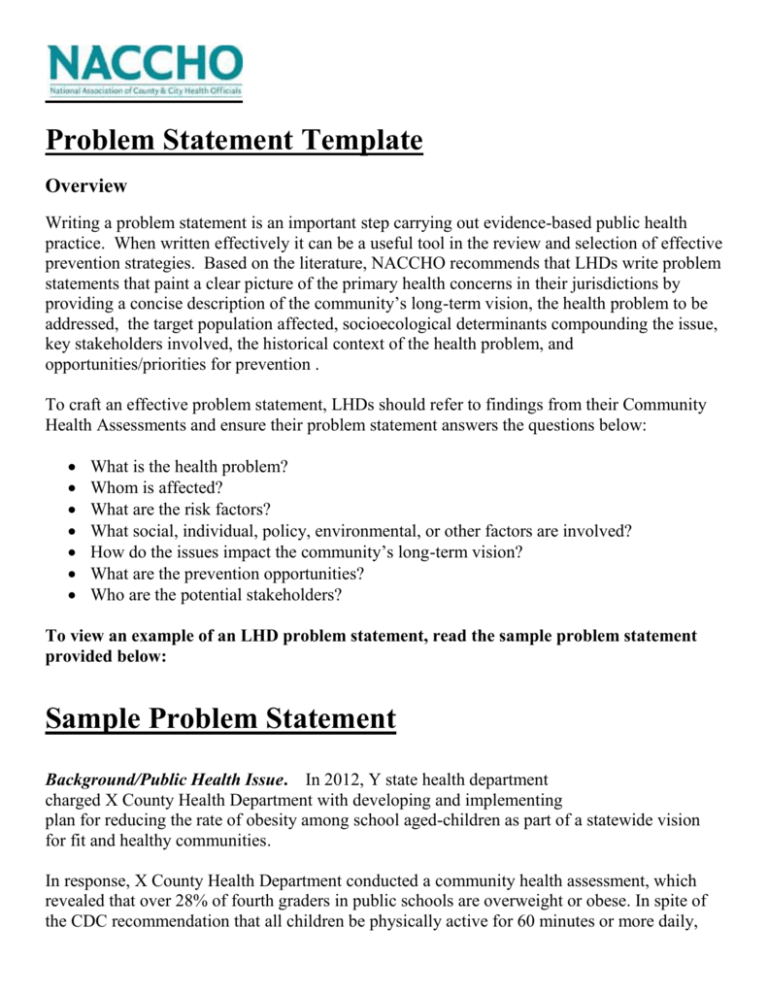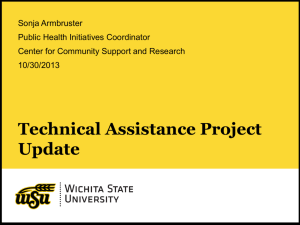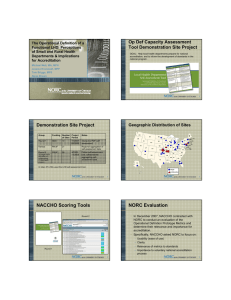Sample Evidence-Based Decision-Making Problem
advertisement

Problem Statement Template Overview Writing a problem statement is an important step carrying out evidence-based public health practice. When written effectively it can be a useful tool in the review and selection of effective prevention strategies. Based on the literature, NACCHO recommends that LHDs write problem statements that paint a clear picture of the primary health concerns in their jurisdictions by providing a concise description of the community’s long-term vision, the health problem to be addressed, the target population affected, socioecological determinants compounding the issue, key stakeholders involved, the historical context of the health problem, and opportunities/priorities for prevention . To craft an effective problem statement, LHDs should refer to findings from their Community Health Assessments and ensure their problem statement answers the questions below: What is the health problem? Whom is affected? What are the risk factors? What social, individual, policy, environmental, or other factors are involved? How do the issues impact the community’s long-term vision? What are the prevention opportunities? Who are the potential stakeholders? To view an example of an LHD problem statement, read the sample problem statement provided below: Sample Problem Statement Background/Public Health Issue. In 2012, Y state health department charged X County Health Department with developing and implementing plan for reducing the rate of obesity among school aged-children as part of a statewide vision for fit and healthy communities. In response, X County Health Department conducted a community health assessment, which revealed that over 28% of fourth graders in public schools are overweight or obese. In spite of the CDC recommendation that all children be physically active for 60 minutes or more daily, only slightly more than half of the students (56%) indicated they are physically active for an hour or more six to seven days per week. Additional data collected from the assessment showed that about 45% of students spend 4 hours a more engaged in sedentary screen-time activities, including playing video or computer games, surfing the internet, and watching television, DVDs, and videotapes. This amount exceeds the American Pediatrics recommendations for screen time among children by 50% and may explain the high level of inactivity among 4th graders in X County. Thirty-percent of the parents of children surveyed stated they thought it would be difficult to enforce a reduction in screen-time among their children due to the following reasons: 1) Their child would have a negative reaction (e.g. throw tantrums); 2) Their child would become bored and the parent would have to find other ways to keep their child occupied; and 3) Their neighborhood wasn’t safe enough for them to feel comfortable with their children playing outdoors or visiting the nearest recreation center. X County Health Department recognizes the vital role that excess-screen time plays in the lack of physical activity impacting the escalating obesity epidemic affecting youth in X. To increase physical activity among youth, it is necessary to reduce screen-time among children and build their parent’s skills to support them in being physically active. Programmatic Issues. Upon reviewing the assessment data, Y State Health Department funded X County Health Department to develop and implement a plan to eliminate childhood obesity among school-aged children in X County within a 12 month timeframe. Solutions Being Considered. Program staff, policy makers, and advisory groups have proposed numerous solutions, including: (1) a community-wide campaign to increase physical activity among children, (2) Support for parents to integrate physical activity into their child’s daily routine, and (3) policies that are aimed at creating places where children can play safely. Potential partners for carrying out these solutions include parents, media outlets, businesses, schools, and members from the transportation sector.











